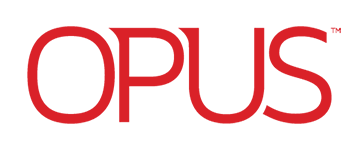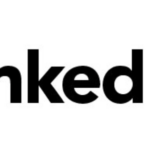How to maximise your investment and get the most value out of your existing tools
For many organisations, Microsoft Teams has been a lifeline throughout the pandemic, bringing colleagues together when they are apart and fostering remote collaboration in challenging times. At the most recent count, usage of the platform has reached 145 million daily users around the world, attesting to its widespread adoption and just how instrumental it has been in helping organisations to weather the repercussions of the global health crisis.
At Opus, we have a number of Microsoft Teams solutions to help businesses achieve their communication and collaboration goals.
The way we work has undoubtedly changed with many of us still working a mixed week with time in the office and time working at home – the use of Microsoft Teams continues to be an integral part of how we all communicate and collabore. With this in mind, we’ve gathered our experts together to ask how organisations that are using Teams can continue to get the most from it to enable the smooth adoption of the next evolution of work?
To help our customers answer these important questions, we sat down with Opus Sales Directors Stephen Harte, Paul Allen and Matt Dudleston. What insights did they share?
Adapting to thrive
“We are already seeing organisations making plans for using Teams in the office as well as at home”, Stephen reveals. “It’s a different environment that will require businesses to adapt. At home, most employees can work from studies or other quiet places to hold remote calls. In the office, that isn’t possible. Users are surrounded by their colleagues, many of whom are also trying to collaborate over video calls simultaneously.”
As Stephen goes on to explain, other challenges can range from unpredictable video backgrounds bringing professionalism into question to important issues of data protection.
“In the case of colleagues holding video calls in a service desk environment, there could well be visible monitors in the background. If another customer’s system goes down and creates a visible alert on one of those monitors, this could appear in the video background, with severe confidentiality implications, for example.”
As more people return to the office, the challenge will grow, making now the ideal time for organisations to have these considerations, before they become a business continuity issue.
“The world changed with remote working”, Stephen explains. “Everyone became used to having their own private working space. Now the world is changing again, and organisations are going to have to learn how to best use the same tools that were designed for fully remote usage in more public arenas such as the office or meeting rooms.”
Microsoft already offers some solutions to these challenges in the form of existing Teams features and functionalities. What are they and how can businesses make the most of them?
Three ways to embrace hybrid working with Teams
At present, Teams users can leverage the background feature and Together mode to help solve some of these challenges. In the near future, Direct Join will also be available, joining the dots between the multiple systems and platforms organisations are using to interact remotely. What are each of these features and how do they help?
Background functionality
Using the Background feature, video call attendees can alter their background to present an image or location of their choosing. From a hybrid working perspective, this has several benefits. For one, it enables organisations to retain control over how they present themselves. Wherever their employees are “calling” from, management can be confident that they are putting forward a consistent, professional image.
It also eliminates the data protection risk inherent in having monitors visible in the background of calls. Screens are hidden from view behind the pre-selected background, keeping customer confidentiality and other sensitive information safely out of sight.
Together mode
“Using Together mode, video call attendees are actually able to impose a setting that brings all the screens together to make it look as though they are all sitting in a meeting room”, Stephen explains. “This might not be an issue for internal meetings, but when video calling customers or partners, it can help to recreate a more traditional feeling to the interaction. As with Teams’ general Background feature, it also makes it impossible to know which employees are office-based and which are working remotely, maintaining professionalism.”
“Together mode combines decades of research and product development to place all the participants on a video call together in a virtual space, such as an auditorium, meeting room or coffee bar, so they look like they’re in the same place together. The new feature ditches the traditional grid of boxes, creating an environment that users say has a profound impact on the feel of the video conference and provides more cohesion to the group.” Susanna Ray, Microsoft
Direct Join
Direct Join is not available yet but it is coming soon. The feature highlights an important friction point in remote/hybrid interactions — namely, which platform an organisation has chosen and how well it is able to adapt to different platforms around customer or partner preferences.“Direct Join removes this friction”, Stephen explains. “Using it, I would be able to go into one of our meeting rooms and join a Zoom or Webex meeting from a Teams device without having to install any third-party software and vice-versa.”
More generally, Stephen identifies meeting room systems and new devices such as headsets as being increasingly popular, shining a light on the fundamental shift that is happening throughout the UK in regard to the widespread adoption of video conferencing.
“This will be the world for the foreseeable future. Our habits have changed in such a way that even once more people are back at the office, they won’t be travelling to client offices with the same frequency that they used to. Already, Teams is designing ways to help its users make interactions more personal, more professional, and easier to interact with customers or partners on different systems.”
Matching technology with process
To get the most out of Teams, organisations should also look to their hybrid working policies underpinning its use. Do these policies exist yet? From the conversations he has been having with our customers, Matt calls this out as an area of interest across industries.
“Businesses are already asking themselves what corporate best practice looks like in regard to hybrid working”, he explains. “When should they require their employees to have video on and when should they turn it off? A lot of people are getting Zoom fatigue because in the past you would have picked up the phone and had a quick conversation. Now it’s video by default. Hybrid working exacerbates this, particularly when you consider the kinds of data protection scenarios Stephen has already described. There might well be instances when it is actually best practice to have users’ videos switched off. From the conversations I have been having with our customers, organisations are starting to tackle these policies now.”
All of this feeds into an organisation’s wider hybrid working strategy. For many businesses, this means reviewing the remote working platforms that have served them so well over the course of the lockdown periods, as well as the existing legacy systems in place on-site, and determining how these systems can complement one another to deliver on the organisational goals and requirements.
Helping our customers to unlock their Teams’ full potential
“Key to getting the most out of Teams will be successfully integrating it with the rest of the organisation’s systems”, Paul explains. “Alone, Teams won’t be the answer to everything. On the other side of the coin, businesses will be looking to their traditional telephony systems and realising that they have gone largely unused over the last 12 months. There’s a balance to be found in orchestrating those interactions through a seamless platform. That’s what we have been helping our customers to uncover, reducing unnecessary costs and giving them the best of both worlds.”
For example, an organisation might look to unlock additional functionalities by layering CCAS (contact centre as a service) over Teams. Equally, they may have a large legacy Cisco estate across various sites, each with contracts at various dates, and they want to be able to migrate their users across to Teams in such a way that all the users can still communicate with each other, whichever platform they’re on. Our engineers can deploy session boarder controllers (SBCs) to enable that, allowing them to move users from one platform to another as needed.
“A lot of organisations are already using Teams as a UI (user interface), so working with Opus to bring in new services such as CCAS can add significant value”, Matt explains, “because it limits the number of interfaces that the end-user has to work with.”
Organisations are not just limited to their telephony solutions, either. In Stephen’s experience, they are also recognising the benefits of integrating Teams with functions such as the CRM and even file storage.
“By working with our customers to understand their business outcomes and what they are trying to achieve, we have delivered a number of complex projects to integrate a wide array of services with our customers’ Teams. From the end-user’s perspective, it couldn’t look simpler. They are able to access any function they could want through one app into Teams, meaning they have one platform to manage and one login to use. It’s so much easier.”
Key takeaways to maximise your Teams’ value
1. Every organisation needs to be thinking about meeting room spaces. We are in the process of launching a new product that enables Teams for meeting room working, which we would be happy to discuss with you further if this is of interest.
2. Businesses should be thinking about devices for getting back into the office, whether these are headsets to reduce noise, cameras for meeting rooms etc.
3. Finally, organisations should be thinking about backgrounds and how they want to present themselves. These are small but important details that shouldn’t be overlooked. We are already providing a number of customers with professional, corporate backgrounds and imaging to support their move back to the office.



